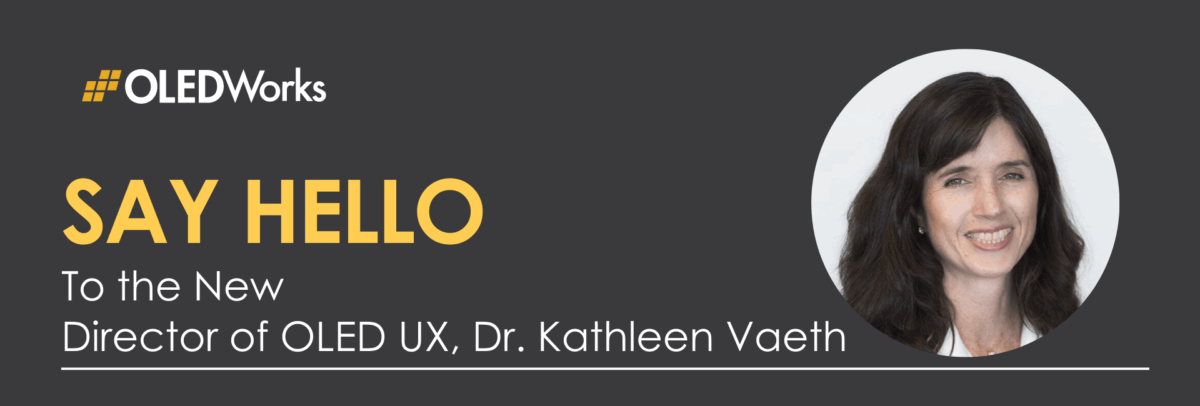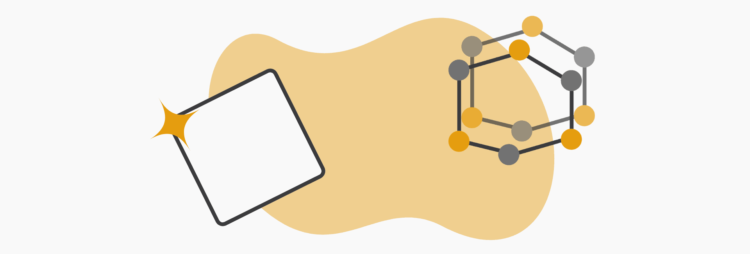
Could you tell us a little about yourself and your new role at OLEDWorks?
I am a chemical engineer by training, with a B.S. from Cornell University, and master’s and Ph.D. from MIT. I spent the first part of my career in the Kodak Research Labs as a scientist and project leader, where I worked on OLEDs, high speed MEMs inkjet printheads, and printed electronics technologies and related products. After I left Kodak, I was the Vice President of Engineering at microGen Systems, a Rochester-based startup, developing MEMs-based piezoelectric vibrational energy harvesters that power sensors and transmitters used in the internet of things. In 2017, I joined the faculty of the Robert Frederick Smith School of Chemical and Biomolecular Engineering at Cornell as a Senior Lecturer and Industrial Practitioner, where I developed and taught upper level undergraduate classes related to product design. I’ve worked on many different technologies, but the common thread through them all is my interest in how materials selection and processing method impact their performance in electronic and optoelectronic devices.
In my new role as Director of User Experience (UX) at OLEDWorks, I will be responsible for leading the OLED UX research and design team, working with sales, marketing, and operations to provide technical sales support, product strategy development, thought leadership, and management of technical projects. I will also be responsible for education and outreach to potential customers on the benefits of OLED lighting technology and products, and for bridging the customer needs to the technical team to ensure that they are met.
What is your previous experience with OLEDs?
My first exposure to OLEDs was in the ‘early days’ of the technology. In 1992, I worked as an intern at Kodak for Ching Tang, one of the founders of OLED technology. After that experience, I was hooked. I had a Hertz Fellowship in graduate school, and with that came a lot of freedom to develop my thesis topic. Based on my experiences at Kodak, I created a project focusing on vapor deposition of electroluminescent polymers with potential for use in OLED displays. After completion of my degree, I joined a group at Kodak where I was a technical contributor and project leader of a multidisciplinary group of scientists exploring solution processed OLED materials and devices, and substrates for flexible OLED displays.
I have over twenty publications and thirty U.S. patents, many of them in OLED-related technologies, and recently co-authored a book chapter on electrically pumped organic semiconductor later emission. I’ve also given multiple invited talks and educational seminars on OLED technology to groups ranging from conference attendees, to high school and college students!
For the last few years, you’ve been working at Cornell University as a professor in the engineering school. Do you see any parallels between your experience there and your new role at OLEDWorks?
Definitely. At Cornell I developed and taught classes related to product design, where students learn how to use information obtained from voice of customer and translate it into the technical characteristics that must be incorporated into the product in order to excite and delight the final user. Issues such as manufacturing robustness, safety and environmental concerns, failure mode analysis, regulatory requirements, market trends, and business economics must be taken into account for the final design.
A large part of my responsibilities at OLEDWorks will also encompass this product design ecosystem, bridging the customer needs to the delivered technical solution. Communicating with and educating the lighting community on the performance and benefits of OLED technology is also part of my role, and my experience teaching in higher education will also be beneficial for that.
What excites you most about this technology and this company?
Lighting is ubiquitous in our environment, which means the possibilities for OLED lighting applications are endless. I love learning new things, so seeing all the different ways that OLED lighting can be considered for incorporation into our world is really interesting to me.
The fact that OLED technology brings a new lighting experience in a thin, compact form factor with the ability to communicate significant amounts of information through digital or segmented/addressable control gives designers the opportunity to explore new design paradigms.
Scientists are also just starting to understand how lighting interacts with the human body beyond the basics of task visualization, providing non-visual cues that impact health and wellbeing, and I’m really interested in understanding how OLED technology can play a role there.
OLEDWorks is also at an exciting time it its history. With Audi, we are working to advance automotive lighting technologies in innovative ways. Through our Channel Partner Program that was kicked-off last year, we are helping luminaire manufacturers bring new approaches to lighting in the indoor spaces we live and work in. I’m excited to be part of what the future will bring for the company.
What are you most excited to work on in the next few months?
I’m looking forward to meeting with designers and customers to learn what their needs are and help them to understand the potential benefits of OLED lighting. I’m also excited about working with lighting technologists to brainstorm the new directions and design capabilities that OLED lighting technology enables.
I realize that the current situation might make it difficult to connect with people in person over the next few months, but after teaching the second half of my senior level course over Zoom this past spring, I feel up to the challenge!



